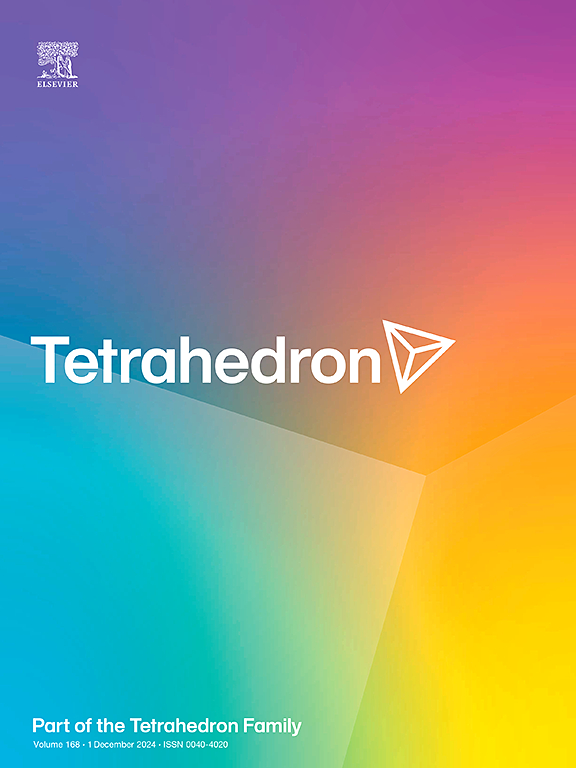吲哚植物毒素 6-溴衍生物迷你库:合成、抗癌概况和结构-活性关系(SAR)研究
IF 2.1
3区 化学
Q2 CHEMISTRY, ORGANIC
引用次数: 0
摘要
本文章由计算机程序翻译,如有差异,请以英文原文为准。

Minilibrary of 6-bromo derivatives of indole phytoalexins: Synthesis, anticancer profile and structure-activity relationship (SAR) study
In this study, we synthesized a minilibrary of twenty-two derivatives of indole phytoalexins containing bromine atom at the position 6 of the indole ring. A short efficient synthesis of novel 6-bromo-1-Boc-brassinin and its amino analogues was achieved, starting from 6-bromo-1H-indole-3-carboxaldehyde in a four-step and a five-step protocol, respectively. In the preparation of the spirocyclic products, electrophilic - nucleophilic 3,2-difunctionalization of the indole core was chosen using bromospirocyclization of 6-bromo-1-Boc-brassinin or thiourea derivatives and subsequent reaction with nucleophiles (methanol or the appropriate aniline). A TFA-promoted cascade reactions of spirocyclic products resulted in the formation of 7-bromocyclobrassinin and its 2-amino analogues. The in vitro antiproliferative activities of prepared compounds were evaluated against a panel of human cancer cell lines and non-malignant cells using the MTT assay and some structure–activity relationships were observed. Results of antiproliferative screening indicated that 3,4-dichlorophenylamino analogue of 6-bromo-1-Boc-brassinin was the most potent (IC50 = 7.1 μM against HCT116 cells, IC50 = 8.8 μM against A549 cells, IC50 = 7.5 μM against Jurkat cells). This compound showed higher antiproliferative activity compared to cisplatin. However, this compound also significantly decreased non-cancer cell proliferation (MCF-10, IC50 = 7.7 μM and Cos-7, IC50 = 12.6 μM). Compounds with 4-(trifluoromethyl)phenylamino and 3,4-dichlorophenylamino moiety tend to have higher IC50 values across multiple cell lines compared to parent compounds with the SCH3 group. The SAR study demonstrated that the incorporation of bromine at the position 6 of indole led to a decrease or loss of activity in most cases.
求助全文
通过发布文献求助,成功后即可免费获取论文全文。
去求助
来源期刊

Tetrahedron
化学-有机化学
CiteScore
3.90
自引率
4.80%
发文量
439
审稿时长
34 days
期刊介绍:
Tetrahedron publishes full accounts of research having outstanding significance in the broad field of organic chemistry and its related disciplines, such as organic materials and bio-organic chemistry.
Regular papers in Tetrahedron are expected to represent detailed accounts of an original study having substantially greater scope and details than that found in a communication, as published in Tetrahedron Letters.
Tetrahedron also publishes thematic collections of papers as special issues and ''Reports'', commissioned in-depth reviews providing a comprehensive overview of a research area.
 求助内容:
求助内容: 应助结果提醒方式:
应助结果提醒方式:


